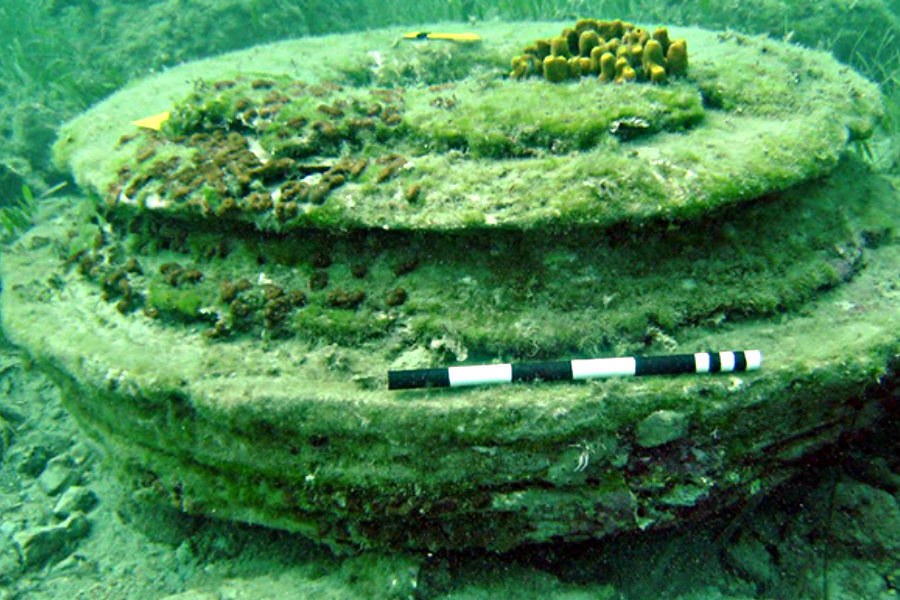Was this underwater Greek city built by humans or microbes?
Loading...
When divers off the shores of Greece's Zakynthos island found smooth floors and what looked to be circular column bases, they thought that they had found the remains of an ancient civilization. The divers' discovery may be more ancient than they ever imagined, according to research published Friday – but it wasn't built by human hands.
The site was not created and abandoned in ancient Grecian times, but rather in the Pliocene era, approximately five million years ago. And credit goes to microbes, not the Greeks, scientists report in a paper in the journal Marine and Petroleum Geology.
"The site was discovered by snorkelers and first thought to be an ancient city port, lost to the sea," lead author Julian Andrews, a professor of environmental science at the University of East Anglia, UK, says in a press release. "There were what superficially looked like circular column bases, and paved floors. But mysteriously no other signs of life – such as pottery."
That absence led scientists to investigate further. Mineralogical and chemical analysis revealed that they were not looking at the remains of an ancient civilization, submerged by the sea after a tidal wave struck their city, but rather the results of ancient geological processes.
Researchers determined that there is probably a subsurface fault at the site, which, though not visible, spews methane gas through the sediment of the sea bed.
"There's no active fluid venting at this site, but having said that there are many around the world," Dr. Andrews told CNN. "These gas leaks are quite common, they're not an unusual phenomenon – the earth's crust is quite a leaky material."
For microbes that live in sediment, that methane gas becomes fuel. As they oxidize the gas, the sediment itself changes composition, creating a cement-like compound – a natural process called concretion.
Erosion uncovered the concrete-like structures, which Dr. Andrews says are formed of a material called dolomite.
"This kind of phenomenon is quite rare in shallow waters," he said of the grouping, found just two to five meters below the waves. "Most similar discoveries tend to be many hundreds and often thousands of meters deep underwater."
Researchers say that while the fossils aren't the remains of an ancient city, they may still be interesting for divers to explore.
Although the structures that scientists once believed were the columns and floors of an ancient civilization were never used by humans, they now form a reef-like protection for Mediterranean fish, Andrews told CNN.








